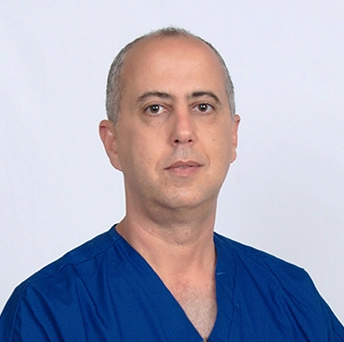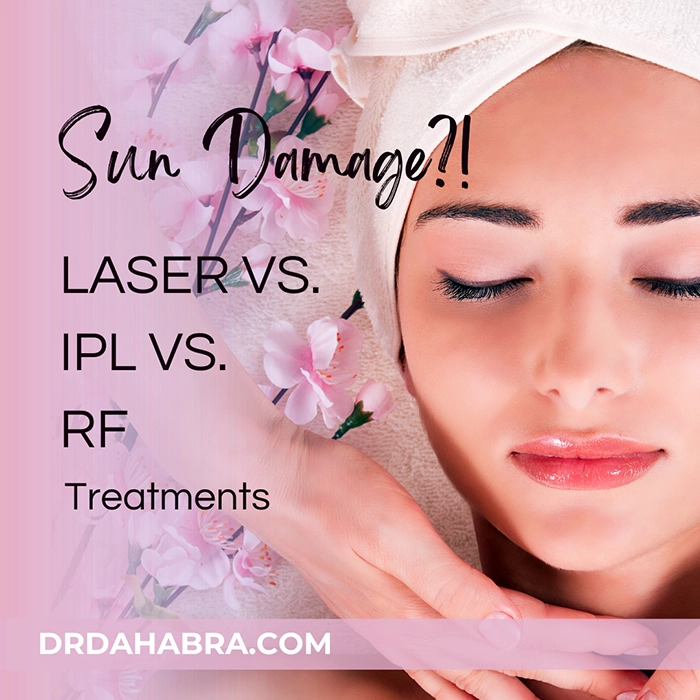Guía completa para restaurar el esqueleto facial y los tejidos blandos después de lesiones
Comprender los traumatismos faciales y las lesiones panfaciales
Los traumatismos faciales abarcan cualquier lesión de la cara, incluidos el esqueleto facial y los tejidos blandos. Este artículo orienta exhaustivamente sobre la restauración del esqueleto facial y los tejidos blandos tras las lesiones.
Estas lesiones pueden ir desde pequeños cortes y contusiones hasta fracturas graves que afectan a varias regiones de la cara. Las lesiones panfaciales son las que afectan a los tercios superior, medio e inferior de la cara. caraa menudo como resultado de impactos a gran velocidad.
Estas lesiones complejas plantean importantes retos debido a la intrincada anatomía de la cara y a la necesidad de restablecer tanto la función como la movilidad. estética. El tratamiento de las fracturas panfaciales requiere un conocimiento exhaustivo de la armonía facial y de las interrelaciones entre las distintas estructuras.
La evaluación precoz y precisa es crucial en el tratamiento de los traumatismos faciales. Esto implica un examen clínico exhaustivo y estudios de imagen para determinar el alcance de las lesiones y planificar una estrategia de tratamiento adecuada para lograr resultados óptimos.
Índice
1. Causas comunes de daños en el esqueleto facial y los tejidos blandos
2. Objetivos de la armonización panfacial en el tratamiento de lesiones
3. Complicaciones derivadas de lesiones faciales no tratadas
4. Medidas preventivas para minimizar los riesgos de traumatismo facial
5. Descripción detallada del procedimiento de armonización facial
6. Técnicas quirúrgicas para la corrección de fracturas panfaciales
7. Enfoques no quirúrgicos para mejorar la armonía facial tras una lesión
8. Evaluación de los beneficios de la armonización facial tras un traumatismo
9. Riesgos y complicaciones potenciales de la reconstrucción facial
10. Plazos y expectativas de recuperación tras una cirugía de traumatismo facial
11. Cuidados a largo plazo y mantenimiento de la armonía facial
12. Técnicas innovadoras de estiramiento y contorno facial
13. Papel de la dermoabrasión y los rellenos en la estética facial
14. Avances en procedimientos de rejuvenecimiento facial y antienvejecimiento
15. Tabla: Factores que afectan a la restauración del esqueleto facial y los tejidos blandos tras lesiones
16. Preguntas más frecuentes (FAQ)
17. Conclusión
18. Referencias
1. Causas comunes de daños en el esqueleto facial y los tejidos blandos
Las lesiones faciales pueden deberse a diversos incidentes, y algunas de las causas más comunes son:
- Accidentes de tráfico: Las colisiones a alta velocidad suelen provocar importantes traumatismos faciales debido a la fuerza del impacto.
- Caídas: Los tropiezos y las caídas, especialmente las de altura, pueden hacer que las personas caigan de bruces, lo que provoca fracturas y lesiones de tejidos blandos.
- Lesiones deportivas: Los deportes de contacto o las actividades con proyectiles pueden provocar golpes directos en la cara.
- Agresiones físicas: Los altercados en los que se dan puñetazos o se utilizan objetos pueden causar graves facial daños.
- Accidentes laborales: Las industrias que implican maquinaria pesada o entornos peligrosos plantean riesgos de lesiones faciales.
Comprender estas causas es esencial para la prevención y para desarrollar estrategias que protejan a las personas de posibles traumatismos faciales.
2. Objetivos de la armonización panfacial en el tratamiento de lesiones
La armonización panfacial pretende restaurar la integridad estructural y estética de la cara apariencia tras lesiones graves. Los objetivos primarios incluyen:
- Restablecimiento de la simetría facial: Garantizar que ambos lados de la cara estén equilibrados y proporcionados.
- Restauración de la funcionalidad: Abordar los problemas relacionados con la respiración, la alimentación, el habla y la visión que puedan estar comprometidos debido a la lesión.
- Minimizar las cicatrices: Emplear técnicas quirúrgicas que reduzcan las cicatrices visibles y favorezcan una mejor cicatrización de los tejidos blandos.
- Bienestar psicológico: Mejorar la autoestima y la salud mental del paciente devolviéndole el aspecto que tenía antes de la lesión lo más parecido posible.
La consecución de estos objetivos requiere un enfoque multidisciplinar en el que participen especialistas en cirugía maxilofacial, cirugía plástica y rehabilitación.
3. Complicaciones derivadas de lesiones faciales no tratadas
Descuidar la tratamiento facial Las lesiones pueden provocar varias complicaciones, entre ellas
- Maloclusión: Desalineación de los dientes y los maxilares, que afecta a las funciones de masticación y habla.
- Asimetría facial: Una cicatrización desigual puede dar lugar a diferencias notables entre los dos lados de la cara.
- Dolor crónico: Molestias persistentes debidas a lesiones nerviosas o a una mala cicatrización de las fracturas.
- Infecciones: Las heridas o fracturas abiertas pueden infectarse, lo que puede provocar más daños en los tejidos y problemas sistémicos.
- Deficiencias funcionales: Dificultad para respirar, problemas de visión o del habla derivados de daños estructurales no tratados.
La pronta intervención médica es crucial para prevenir estos resultados adversos y garantizar una curación adecuada.
4. Medidas preventivas para minimizar los riesgos de traumatismo facial
Aunque no todas las lesiones faciales pueden prevenirse, algunas medidas específicas pueden reducir significativamente el riesgo:
- Uso de equipos de protección: Utilice cascos, protectores faciales y bucales durante las actividades o deportes de alto riesgo.
- Cumplimiento del cinturón de seguridad: Utilice siempre el cinturón de seguridad cuando conduzca o viaje en vehículos para minimizar las lesiones en caso de accidente.
- Entornos seguros: Implantar protocolos de seguridad para prevenir caídas y otros accidentes en lugares de trabajo y hogares.
- Sensibilización y educación: Informar a las personas sobre los riesgos asociados a determinadas actividades y promover un comportamiento prudente.
La adopción de estas estrategias preventivas puede ayudar a reducir la incidencia de traumatismos faciales.
5. Descripción detallada del procedimiento de armonización facial
La armonización facial es un enfoque médico personalizado restablecer el equilibrio y la proporción del rostro tras un traumatismo.
Este proceso suele comenzar con una evaluación exhaustiva por parte de un cirujano maxilofacial o plástico que traza un mapa de las lesiones y evalúa el grado de desfiguración o disfunción. El objetivo no es sólo reparar los huesos o los tejidos blandos, sino restablecer la armonía facial general, en la que cada parte se complementa con las demás.
La intervención suele consistir en una serie de cirugías por etapas, empezando por la estabilización del esqueleto facial mediante técnicas de fijación rígida. Esto puede incluir placas, tornillos o incluso injertos óseos.
Una vez asegurada la estructura ósea, la atención se centra en los tejidos blandos. Los cirujanos reparan o recolocan los músculos, la piel y la grasa dañados para recuperar el aspecto natural del paciente. expresiones faciales.
La recuperación es un proceso gradual. Los cuidados postoperatorios incluyen fisioterapia, ajustes estéticos y, en ocasiones, dermoabrasión. rellenos o tratamientos de rejuvenecimiento para alisar cicatrices.
En general, el procedimiento de armonización facial es completo y personalizado, y aborda la función y la forma para garantizar que el paciente vuelva a verse y sentirse como él mismo.
6. Técnicas quirúrgicas para la corrección de fracturas panfaciales
La corrección de las fracturas panfaciales es complicada y compleja, y a menudo requiere un abordaje quirúrgico escalonado.
Los cirujanos dan prioridad a las regiones estructuralmente más significativas, empezando normalmente por el tercio superior de la cara y descendiendo hacia abajo. Esta estrategia, conocida como enfoque "descendente y descendente", proporciona un marco estable para reconstruir el resto de la cara.
Las técnicas quirúrgicas clave incluyen la reducción abierta y fijación interna (ORIF), que realinea los huesos fracturados y los fija mediante placas y tornillos de titanio. En los casos más graves, pueden utilizarse injertos óseos de la costilla o la cadera del paciente para reconstruir el hueso perdido o gravemente dañado.
Los cirujanos también utilizan imágenes intraoperatorias y herramientas de navegación en 3D para garantizar una alineación precisa y evitar complicaciones.
La reconstrucción de tejidos blandos suele seguir a la reparación ósea. Esto puede implicar técnicas microquirúrgicas para restablecer el flujo sanguíneo a las zonas lesionadas o transferencias de colgajos libres para reemplazar grandes secciones de tejido faltante.
Cada paso quirúrgico se coordina cuidadosamente para mantener la simetría facial y restaurar el aspecto estético y la funcionalidad.
7. Enfoques no quirúrgicos para mejorar la armonía facial tras una lesión
While surgery is often necessary for severe injuries, many patients benefit from non-surgical treatments to enhance results or address minor concerns.
Rellenos dérmicospor ejemplo, pueden corregir la pérdida de volumen o la asimetría resultante de un traumatismo. Estos Los tratamientos inyectables ayudan a afinar los contornos y mejorar la proporciones, contribuyendo a la armonía general.
Otros métodos no quirúrgicos populares incluyen Botox para la relajación muscular, rejuvenecimiento con láser para tratar cicatrices y microneedling para estimular la producción de colágeno. Estas técnicas mejoran el aspecto y favorecen el proceso de cicatrización al estimular las respuestas regenerativas naturales de la piel.
Para mantener la armonía facial a largo plazo, los pacientes pueden someterse periódicamente a procedimientos no invasivos como exfoliaciones químicas o tratamientos faciales diseñados para rejuvenecer la piel. Estas terapias son especialmente útiles en la fase de recuperación, ya que ayudan a los pacientes a recuperar la confianza y la comodidad en su aspecto sin tiempos de inactividad adicionales ni riesgos quirúrgicos.
8. Evaluación de los beneficios de la armonización facial tras un traumatismo
La armonización facial proporciona beneficios tanto estéticos como funcionales después de un traumatismo.
La ventaja más evidente es el restablecimiento de la simetría facial, que ayuda a las personas a sentirse más cómodas y seguras de su aspecto. La reconstrucción de la estructura facial también favorece funciones críticas como el habla, la visión y la alimentación, que pueden verse gravemente afectadas por las lesiones.
Otro beneficio importante es el psicológico. Muchos pacientes experimentan una mejora de su salud mental y bienestar emocional a medida que su aspecto vuelve a la normalidad.
Esta recuperación emocional puede ser tan importante como la física, especialmente en casos de lesiones desfigurantes que afectan a la autoestima y las interacciones sociales.
La armonización facial a largo plazo también previene complicaciones secundarias como el dolor crónico, la maloclusión y la cicatrización ósea inadecuada. Al abordar los efectos visibles e invisibles de los traumatismos faciales, este enfoque integral garantiza una recuperación duradera y mejoras en la calidad de vida.
9. Riesgos y complicaciones potenciales de la reconstrucción facial
Como cualquier intervención quirúrgica, la reconstrucción facial conlleva ciertos riesgos. Una de las complicaciones más frecuentes es la infección, sobre todo en casos de heridas abiertas o implantes.
Los cirujanos toman medidas para minimizar este riesgo con antibióticos y técnicas estériles, pero aun así pueden producirse infecciones que requieran tratamiento adicional.
Otro riesgo es la cicatrización ósea incorrecta o malunión, en la que los huesos cicatrizan desalineados. Esto puede dar lugar a asimetrías o trastornos funcionales, que a veces hacen necesaria una cirugía de revisión.
El daño nervioso también es motivo de preocupación, sobre todo en las intervenciones de los nervios infraorbitarios o faciales. Esto puede provocar entumecimiento, hormigueo o incluso pérdida de la función muscular.
Las cicatrices, aunque suelen minimizarse con las técnicas modernas, pueden seguir siendo un problema, sobre todo en pacientes con tonos de piel más oscuros o tendencia queloide. Los cirujanos suelen recomendar terapias cutáneas como los tratamientos con láser o gel de silicona para reducir la visibilidad de la cicatriz.
Comprender estos riesgos y prepararse para ellos ayuda a los pacientes a tomar decisiones con conocimiento de causa y a tener expectativas realistas.
10. Plazos y expectativas de recuperación tras una cirugía de traumatismo facial
La recuperación de un traumatismo facial es un proceso que se desarrolla por etapas. Inicialmente, los pacientes deben esperar hinchazón, hematomas y algunas molestias, que suelen alcanzar su punto máximo en los primeros días.
El tratamiento del dolor y las compresas frías ayudan a aliviar estos síntomas. Los cirujanos prescriben antibióticos para prevenir infecciones y proporcionan instrucciones postoperatorias detalladas, incluidas restricciones dietéticas y limitaciones de actividad.
Hacia la segunda o tercera semana, la mayor parte de la inflamación empieza a remitir y los pacientes pueden empezar a ver los primeros resultados de la intervención. En esta fase, las citas de seguimiento son cruciales para controlar la cicatrización y retirar los puntos si es necesario.
Algunas personas pueden iniciar la fisioterapia de forma significativa si la función mandibular o el movimiento muscular se ven afectados.
La recuperación a largo plazo varía en función de la complejidad de la lesión. La cicatrización ósea completa puede llevar de 6 a 12 semanas, mientras que la regeneración nerviosa o la cicatrización de los tejidos blandos podría llevar meses.
Posteriormente pueden realizarse retoques de cicatrices y mejoras no quirúrgicas, como tratamientos con láser o rellenos, para afinar el resultado estético final.
11. Cuidados a largo plazo y mantenimiento de la armonía facial
Mantener la armonía facial tras la recuperación implica una mezcla de hábitos saludables, revisiones rutinarias y retoques ocasionales.
Se aconseja a los pacientes que sigan un cuidado de la piel un régimen adaptado a su tipo de piel, que incluya protección solar, para proteger la piel en proceso de cicatrización y minimizar la decoloración. Mantenerse hidratado, seguir una dieta rica en nutrientes y evitar el tabaco favorecen la cicatrización y el aspecto óptimos de los tejidos.
Las visitas periódicas al cirujano estético o reconstructivo garantizan que cualquier cambio o problema postoperatorio se aborde a tiempo. Si rellenos dérmicos o Botox formaban parte del plan de tratamiento, puede ser necesario renovarlos cada pocos meses.
Los tratamientos no invasivos, como la microdermoabrasión, la exfoliación química o la micropunción, pueden ayudar a mejorar la textura y el tono de la piel.
El apoyo psicológico también puede formar parte de los cuidados a largo plazo, especialmente para los pacientes que han pasado por acontecimientos traumáticos. Muchos se benefician de la terapia o los grupos de apoyo para abordar la curación emocional.
Mantener la armonía facial no sólo tiene que ver con la apariencia, sino con el bienestar general y la confianza.
12. Técnicas innovadoras de estiramiento y contorno facial
Los avances modernos han introducido métodos mínimamente invasivos para tensar y contornear la cara tras un traumatismo.
Uno de los procedimientos más recientes es la lipólisis asistida por radiofrecuencia, que tensa la piel mediante la administración de calor controlado a las capas subdérmicas. Esta técnica reduce la flacidez y favorece la producción de colágeno, ayudando a restaurar facial tono.
Ultrasound therapy, like Ultherapy, uses sound waves to lift and tighten skin, particularly around the jawline and cheeks. It’s non-invasive and has tiempo de inactividad mínimopor lo que es una opción popular para pacientes postraumatizados que desean un rejuvenecimiento suave sin cirugía.
Para pacientes que necesitan un contorno más significativo, elevadores de rosca y los injertos de grasa ofrecen resultados sutiles y más duraderos. Ascensores reposicionar el tejido flácido mediante suturas disolubles, mientras que el injerto de grasa transfiere grasa de otra zona del cuerpo para añadir volumen y definición.
Estas innovadoras herramientas pueden ser el toque final para recuperar la juventud y la simetría.
13. Papel de la dermoabrasión y los rellenos en la estética facial
La dermoabrasión es una técnica de rejuvenecimiento cutáneo que alisa las irregularidades causadas por traumatismos, como cicatrices o texturas rugosas.
Mediante un dispositivo giratorio, se exfolian las capas más externas de la piel para revelar una piel más suave y nueva debajo. Esto es especialmente eficaz en el tratamiento de cicatrices postquirúrgicas o traumáticas.
Rellenos dérmicos, como Juvederm o Restylaneayudan a recuperar el volumen perdido en zonas como las mejillas, las sienes y la mandíbula. Estos inyectables a base de ácido hialurónico también pueden corregir asimetrías y mejorar el contorno facial, creando un aspecto más equilibrado.
Los rellenos se utilizan habitualmente como complemento no quirúrgico de la armonización panfacial.
Cuando se utilizan conjuntamente, la dermoabrasión y la los rellenos aportan textura y contorno mejoras. Son ideales para pacientes que desean mejorar los resultados tras la cicatrización de una intervención quirúrgica o para aquellos con pequeños desequilibrios residuales que no requieren cirugía adicional.
14. Avances en procedimientos de rejuvenecimiento facial y antienvejecimiento
Rejuvenecimiento facial ha evolucionado más allá del lifting tradicional.
En la actualidad, diversos procedimientos antienvejecimiento se dirigen a las capas superficiales y profundas de la piel. Tratamientos como el PRP (plasma rico en plaquetas) utilizan los factores de crecimiento del organismo para acelerar la cicatrización y estimular la producción de colágeno, lo que se traduce en una piel más tersa y firme.
Inyecciones antiarrugas como Botox relajar los músculos hiperactivos que provocan líneas y arrugas, sobre todo en la frente y alrededor de los ojos. Suelen combinarse con rellenos dérmicos en una "lifting líquido" para rejuvenecer el rostro sin cirugía.
Otros avances son los MediFaciales, que son tratamientos personalizados. tratamientos faciales que combinan limpieza profunda, exfoliación y sueros activos. Estos tratamientos ayudan a mantener los resultados a lo largo del tiempo y son los favoritos de quienes se recuperan de un traumatismo facial y desean mantener un aspecto joven y renovado.
Pasemos a la tabla de factores que afectan a los procedimientos de restauración.
15. Tabla: Factores que afectan a la restauración del esqueleto facial y los tejidos blandos tras lesiones
Factor Explicación Impacto en el coste Gravedad de la lesión Extensión de las fracturas óseas y de los daños en los tejidos blandos. Una mayor gravedad aumenta los costes quirúrgicos. Tipo de traumatismo Las caídas, los accidentes o los golpes pueden dictar la complejidad. Los traumatismos de alto impacto suelen costar más. Número de cirugías necesarias Algunas lesiones requieren procedimientos escalonados o múltiples. Más cirugías aumentan los gastos totales. Uso de imágenes avanzadas Las tomografías computarizadas y las imágenes en 3D guían la planificación quirúrgica. Añade gastos de diagnóstico. Necesidad de injertos óseos Los segmentos óseos ausentes o aplastados requieren injertos. Aumenta los costes quirúrgicos y de hospitalización. Implicación de la reparación de tejidos blandos Reconstrucción de músculos, nervios y piel. El trabajo complejo de los tejidos blandos añade costes. Terapias posquirúrgicas Incluye fisioterapia, dermoabrasión y rellenos. Aumenta el coste de recuperación a largo plazo. Duración de la estancia hospitalaria Una recuperación más prolongada o los cuidados en la UCI aumentan los costes de hospitalización. Aumenta directamente la factura total. Elección del cirujano/especialista Los cirujanos más expertos cobran honorarios más elevados. Los honorarios de los especialistas varían considerablemente. Ubicación del centro de tratamiento El coste varía según el estado o el entorno urbano. Los hospitales urbanos o privados pueden ser más caros.
16. Preguntas frecuentes sobre la restauración del esqueleto facial y los tejidos blandos tras una lesión
Q1. ¿Qué es la armonía facial?
Respuesta concisa: La armonía facial es el equilibrio y la proporción entre los rasgos faciales para lograr un aspecto estéticamente agradable.
Respuesta detallada: La armonía facial se consigue cuando todas las partes de la cara -frente, ojos, nariz, mejillas, mandíbula y labios- están proporcionadas y son simétricas, creando un aspecto natural y atractivo. Tras un traumatismo facial, restaurar la armonía implica alinear las estructuras óseas y reparar los tejidos blandos para restablecer la función y el aspecto.
Es un objetivo clave de la cirugía reconstructiva facial.
Q2. ¿Qué significa panfacial?
Respuesta concisa: Panfacial se refiere a lesiones o procedimientos que afectan a los tres tercios de la cara: superior, medio e inferior.
Respuesta detallada: En términos médicos, las lesiones panfaciales afectan a varias zonas de la cara a la vez, a menudo la frente (parte superior), las mejillas y la nariz (parte media) y la mandíbula (parte inferior). Estas lesiones son complejas y suelen deberse a traumatismos importantes, como accidentes de tráfico o caídas graves.
El tratamiento requiere un enfoque quirúrgico coordinado para abordar cada uno de los afectados facial zona.
Q3. ¿En qué consiste el procedimiento de armonización facial?
Respuesta concisa: Combina técnicas quirúrgicas y no quirúrgicas para restaurar equilibrio facial y estética tras un traumatismo.
Respuesta detallada: La armonización facial implica realinear los huesos faciales, reparar los daños en los tejidos blandos y utilizar mejoras estéticas como rellenos o Botox.
Se adapta a cada paciente y puede incluir cirugías como injertos óseos o reposicionamiento mandibular, seguidas de retoques estéticos para mejorar la simetría, la función facial y la confianza emocional.
Q4. ¿Qué tipo de intervención se realiza para corregir las fracturas panfaciales?
Respuesta concisa: Las fracturas panfaciales se corrigen mediante reconstrucción quirúrgica por etapas, a menudo utilizando dispositivos de fijación.
Respuesta detallada: Estas intervenciones suelen comenzar con la estabilización de las estructuras óseas más críticas, a menudo utilizando placas y tornillos para mantener en su sitio los segmentos fracturados. Los cirujanos trabajan de arriba abajo y de fuera adentro, dando prioridad a la simetría facial y a la seguridad de las vías respiratorias.
La reparación de tejidos blandos, los injertos óseos y las técnicas de imagen avanzadas guían la reconstrucción en casos complejos.
Q5. ¿Cuál es un ejemplo de traumatismo maxilofacial?
Respuesta concisa: Una mandíbula rota por un accidente de tráfico es un ejemplo típico de traumatismo maxilofacial.
Respuesta detallada: Por traumatismo maxilofacial se entiende cualquier lesión facial y mandibular. Algunos ejemplos son las fracturas nasales por lesiones deportivas, las fracturas orbitarias por caídas y las fracturas de mandíbula por agresiones físicas o accidentes de tráfico.
Estas lesiones suelen requerir tratamiento especializado para restaurar tanto la función como la apariencia, debido a la compleja anatomía de la cara.
Q6. ¿Qué es un traumatismo facial?
Respuesta concisa: Un traumatismo facial es cualquier lesión de los huesos o tejidos blandos de la cara causada por un impacto o una fuerza.
Respuesta detallada: Los traumatismos faciales incluyen cortes, contusiones, fracturas o dislocaciones que afectan a la piel, los músculos y los huesos de la cara. Las causas más comunes son las caídas, los accidentes, los deportes y la violencia.
Dependiendo de la gravedad, el tratamiento abarca desde puntos de sutura y cuidados de la herida hasta complejas intervenciones quirúrgicas para restablecer el aspecto y la función normales.
Q7. ¿Qué aspecto tiene un rostro traumatizado?
Respuesta concisa: Una cara traumatizada puede parecer hinchada, magullada, deformada o asimétrica.
Respuesta detallada: El aspecto varía en función de la gravedad de la lesión. Los signos pueden incluir cortes, fracturas visibles, zonas aplanadas o hundidas, rasgos faciales desalineados o alteraciones funcionales, como dificultad para hablar o masticar.
La atención médica inmediata es esencial para prevenir complicaciones a largo plazo y restaurar la estructura facial original.
Q8. ¿Cuáles son las señales de alarma de una lesión facial?
Respuesta concisa: El entumecimiento, la mandíbula desalineada, la visión borrosa o el dolor intenso son señales de alarma de una lesión facial.
Respuesta detallada: Los signos de advertencia de una lesión facial grave incluyen hemorragia incontrolada, asimetría facial, dificultad para respirar o tragar, entumecimiento o salida de líquido por la nariz o los oídos.
Estos síntomas pueden indicar fracturas, daños nerviosos o lesiones internas y deben provocar una evaluación de urgencia inmediata.
Q9. ¿Cuánto tardan en curarse los traumatismos faciales?
Respuesta concisa: El tiempo de cicatrización varía, pero suele oscilar entre 6 semanas y varios meses.
Respuesta detallada: Las lesiones faciales leves pueden curarse en 2-4 semanas, mientras que las fracturas más complejas que requieren cirugía pueden tardar entre 8 y 12 semanas en curarse y hasta un año en recuperarse los tejidos blandos.
Rehabilitación, incluida la física terapia y tratamientos estéticospuede ampliar el plazo de curación.
Q10. ¿Cuáles son las tres fracturas faciales más frecuentes?
Respuesta concisa: Las fracturas nasales, mandibulares (mandíbula) y cigomáticas (pómulo) son las más frecuentes.
Respuesta detallada: Estas zonas son las más expuestas y vulnerables a los traumatismos. Las fracturas nasales se producen por golpes directos, las de mandíbula por caídas o puñetazos, y las de pómulo suelen ser consecuencia de impactos laterales.
Los tres requieren un tratamiento preciso para evitar problemas respiratorios, alimentarios o de simetría facial a largo plazo.
Q11. ¿Qué es una fractura maxilofacial?
Respuesta concisa: Es una rotura de uno o varios huesos faciales, incluidos los maxilares y los pómulos.
Respuesta detallada: Las fracturas maxilofaciales afectan al maxilar superior (maxila), el maxilar inferior (mandíbula), los huesos nasales y los huesos orbitarios que rodean los ojos.
Estas lesiones suelen ser consecuencia de traumatismos de alto impacto y requieren la atención coordinada de equipos dentales, quirúrgicos y, en ocasiones, neurológicos para garantizar la plena recuperación de la función y el aspecto.
Q12. ¿Puede una fractura maxilar curarse por sí sola?
Respuesta concisa: Las fracturas maxilares leves pueden curarse con reposo, pero la mayoría necesitan tratamiento médico o quirúrgico.
Respuesta detallada: Aunque las fracturas leves a veces pueden curarse con inmovilización y reposo, el maxilar sostiene estructuras vitales como los dientes, los senos paranasales y la nariz.
Las fracturas desplazadas o las que afectan a la alineación de la mordida suelen requerir cirugía para realinear los huesos y evitar complicaciones como las infecciones crónicas de los senos paranasales o la asimetría facial.
Q13. ¿Cuáles son los diferentes tipos de fracturas del tercio medio facial?
Respuesta concisa: Incluyen las fracturas de Le Fort I, II y III, cada una de las cuales afecta a diferentes niveles faciales.
Respuesta detallada: Las fracturas mediofaciales se clasifican según la clasificación de Le Fort. Le Fort I afecta a la mandíbula superior (maxilar), Le Fort II afecta al puente nasal y a la mitad de la mejilla, y Le Fort III se extiende por las órbitas, provocando una separación facial completa del cráneo.
El tratamiento varía en función de la gravedad y la complejidad de la fractura.
Q14. ¿Es dolorosa la cirugía de contorno facial?
Respuesta concisa: Se trata de un dolor moderado, controlado eficazmente con medicamentos prescritos.
Respuesta detallada: Los niveles de dolor varían en función del alcance de la intervención, pero la mayoría de los pacientes refieren molestias más que dolor intenso. La inflamación y la sensibilidad son típicas durante los primeros días.
Los cirujanos ofrecen planes de tratamiento del dolor y consejos de postratamiento para facilitar la recuperación y acelerar la cicatrización.
Q15. ¿En qué consiste el nuevo procedimiento de estiramiento facial?
Respuesta concisa: Los procedimientos basados en radiofrecuencia y ultrasonidos, como Ultherapy, son nuevas opciones de estiramiento.
Respuesta detallada: Estas técnicas utilizan energía para estimular el colágeno y tensar la piel sin cirugía. Las microagujas de radiofrecuencia (RF) y la terapia de ultrasonidos actúan calentando las capas más profundas de la piel, lo que provoca un efecto lifting natural.
They’re ideal for patients looking for subtle yet noticeable rejuvenecimiento facial post-trauma.
17. Conclusiones: Restauración del esqueleto facial y los tejidos blandos tras lesiones
Restaurar el esqueleto facial y los tejidos blandos tras una lesión no es sólo una transformación física, es un viaje emocional y funcional hacia la plenitud. Mediante el complejo proceso de armonización panfacial, los pacientes recuperan su aspecto y su capacidad para hablar, sonreír y expresarse con confianza.
Este enfoque complejo, a menudo en varias fases, aborda la combinación única de traumatismos esqueléticos y de tejidos blandos que se producen como consecuencia de accidentes, caídas y lesiones maxilofaciales. Los cirujanos pueden reconstruir rostros y vidas alineando precisión médica con estética arte.
Nunca se insistirá lo suficiente en la importancia de un tratamiento oportuno y completo de los traumatismos faciales. Si no se tratan, estas lesiones pueden provocar complicaciones a largo plazo, como dolor crónico, asimetría facial y deterioro de las funciones cotidianas.
Gracias a las modernas técnicas quirúrgicas, las tecnologías de imagen y las mejoras no quirúrgicas, los pacientes pueden acceder ahora a opciones eficaces y personalizadas para recuperar la armonía facial.
Ya sea cirugía reconstructiva, procedimientos de estiramiento facial o dermoabrasión, cada método es clave para ayudar a las personas a recuperar su confianza y su aspecto natural.
En última instancia, el objetivo del tratamiento de las fracturas panfaciales y los traumatismos faciales va más allá de la estética: se trata de restablecer la identidad, la dignidad y la función.
Los pacientes suelen salir del proceso de recuperación no sólo transformados físicamente, sino también fortalecidos emocionalmente.
En un mundo en el que nuestros rostros son las ventanas de nuestra personalidad, recuperar el equilibrio facial tras un traumatismo puede suponer la diferencia entre sobrevivir y prosperar.
Este artículo trata todo sobre la restauración del esqueleto facial y los tejidos blandos tras las lesiones.
Recupere su belleza con arreglos del esqueleto facial y los tejidos blandos con el Dr. Dahabra
Experimente la mejor restauración del esqueleto facial y los tejidos blandos tras las lesiones y restaurar su aparición con el Dr. Dahabra. ¿Por qué esperar para liberar su belleza?
Llámenos ahora al (954) 595-2607 o reserve online. Su viaje comienza con sólo un clic o una llamada.
Abraza la belleza, abraza la innovación - Embrace You.
18. Referencias
- Dr. Chadi Dahabra
- Plantation Med Spa
- West Palm Beach Med Spa
- Tratamiento de las fracturas panfaciales: Una visión general
- Traumatismo facial: evaluación inicial y tratamiento
- Imágenes tridimensionales en cirugía maxilofacial
- Lesiones de los tejidos blandos de la cara
- Cirugía estética facial y fracturas panfaciales: Una revisión exhaustiva
- Patrones de fractura facial en colisiones de vehículos de motor
- Resultados del tratamiento de fracturas panfaciales: La secuencia quirúrgica importa
- Asimetría facial postraumática: Corrección quirúrgica y resultados.




